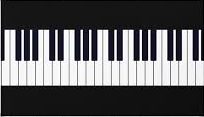Music’s Selling Power
MUSIC PROVIDES AN INTEGRAL BACKGROUND IN THE SENSORY BRANDING INDUSTRY
July 07, 2011 — 4:41 pm PDT
Nick Krewen / GRAMMY.com
It was once known — and snidely regarded — as “elevator music.”
But 77 years after it was first introduced, Muzak, and other forms of business-applicable music, is considered to be an integral part of the rising sensory branding industry, which engages consumers to improve their retail experience through their five senses: sight, smell, touch, taste, and sound.
As a 1982 study by Loyola University marketing professor R.E. Milliman concluded, the introduction of music in a retail environment — and even a change of the music’s tempo — can favorably boost the bottom line, finding that retail outlets that offered slow-paced music increased their average sales by approximately 40 percent.
A 1991 study commissioned by Muzak Holdings LLC also yielded similar results, noting that low arousal music in a retail environment resulted in an 18.9 percent spike in impulse purchases, while audio advertising influenced more than 80 percent of all buying decisions.
Lorne Abony, CEO and chairman of Mood Media Corporation, an in-store media specialist that purchased Muzak Holdings LLC in May for a cool $345 million, says advertisers have taken notice of the impulsive impact music can have on consumers.
“We provide the background or foreground music to 470,000 locations the world over, for some of the most advanced, cool brands, from Nike to Guess,” says Abony, whose Toronto-based company has acquired Somerset Entertainment (home to the nature-driven Solitudes recordings), Muzak competitor Trusonic and Finland’s Pelika Business Music Oy.
“The perception really has changed: music really helps our customers sell more. It creates an environment that is conducive and consistent with their brand.”
The music in retail environments has also changed, transforming from the syrupy, orchestrated instrumental covers of hits — coined as “elevator music” during the skyscraper construction boom in the late ’20s and ’30s to reflect the piped-in melodies that would keep elevator passengers calm as they ascended and descended the building — to a current library of 2.8 million songs, many of them contemporary hits licensed directly from artists and their record companies.
As marketing techniques become more sophisticated, the dismissive derision is now giving way to a newfound respect as Mood Media and numerous corporate players such as the Applied Media Technologies Corporation, InStore Broadcasting Network, DMX, PlayNetwork, and Sirius XM Radio vie for their own slice of the estimated $2 billion sensory branding industry.
The appeal of sensory branding is easy to understand: the customer base covers such diverse markets as retail (food, fashion, cosmetics), hospitality, leisure, financial institutions, telecommunications, and fast food restaurants.
Aside from the bottom line bump, frequent selling points for most vendors include uninterrupted music free of DJ chitchat, commercials and station IDs; minimum-fuss delivery modes (Internet, satellite or on-premise media); more than 100 program choices; screened lyrics; paid music licenses to performing rights societies, and a reasonable subscription fee as low as $25 per month.
And providers claim their services bring other benefits such as customer retention and stress reduction, as well as competitive advantage and increased employee productivity.
Of course, Major General George Owen Squier, who invented the Muzak concept through his Cleveland-based Wired Radio Inc. back in 1934, had an inkling there was a market to be exploited.
Gucci Timepieces & Jewelry recently teamed up with The Recording Academy for a partnership that will entail the GRAMMY Museum analyzing and preserving an archive of more than 20,000 unearthed original Muzak recordings, revealing the company’s — and the industry’s — impressive, historic legacy.
Along the way, Muzak introduced and pioneered such concepts as “stimulus progression” — a system providing people with a psychological “lift” through programming sound in 15-minute blocks, determining stimulus by tempo, rhythm, instrumentation, and orchestra size — and “audio architecture,” which customizes the piped-in or pre-programmed music to reflect individual business needs.
Within the past decade, audio messaging has been added into the mix, with impressive results. A 2004 study conducted by media research firm Arbitron Inc. discovered that 70 percent of shoppers who heard retail audio advertisements found them to be helpful with their shopping experience, with 41 percent of them making an impulse purchase, and 37 percent making an unplannedpurchase of a product from a brand other than what they had in mind.
With this aural ammunition operating so effectively and efficiently when it comes to encouraging consumers to open their wallets, companies such as Mood Media, now working with more than 800 retail chains in more than 30 countries worldwide, predict a bullish future in sensory branding, especially where music is concerned.
“We see this as a very exciting, very rapidly growing market,” says Abony.
Music’s Selling Power | GRAMMY.com
Postscript:
As of 2017, Mood Media Corporation is now headquartered out of Austin, Texas.
Lorne Abony is the CEO of FastForward Innovations Ltd. and owns the Orange County Breakers, a World Team Tennis sports franchise.


Be the first to comment on "Music’s Selling Power"